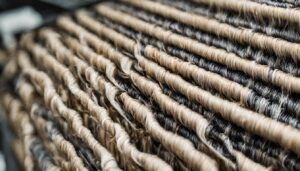Textile production is an intricate dance of threads and patterns, with weaving at its heart. From ancient traditions to modern innovations, the art of weaving plays a crucial role in shaping the fabrics that envelop our daily lives. Let’s dive into the fascinating world of weaves, exploring their historical roots, technological advancements, and the profound impact they have on the quality and aesthetics of textiles.
Introduction
-
Definition of Weaves in Textile Production
Weaving, in the context of textile production, involves the interlacing of warp and weft threads to create fabric. This age-old craft has been an integral part of human civilization, serving both functional and artistic purposes.
. Historical Significance
The roots of weaving trace back to ancient civilizations, where manual looms and skilled artisans crafted textiles for various purposes. From clothing to household items, weaving held cultural and economic significance.
. Importance in Modern Textile Industry
In the contemporary textile industry, weaving has evolved with technological advancements, contributing to the efficiency and diversity of fabric production. Understanding the basics of weaving is crucial to appreciate its impact fully.

Basics of Weaving
. Understanding the Loom
At the core of weaving lies the loom—a device that facilitates the systematic interlacing of warp and weft threads. The evolution of looms, from manual to automated, has revolutionized the efficiency of textile production.
. Warp and Weft Threads
The fundamental elements of weaving are the warp (lengthwise) and weft (crosswise) threads. The intricate interplay between these threads determines the texture, strength, and visual appeal of the fabric.
. Types of Weaving Techniques
Weaving techniques vary widely, from the simple plain weave to more complex patterns like twill and satin. Each technique contributes to the unique characteristics of the fabric, offering a wide range of options for designers and manufacturers.

Role of Weaving in Textile Production
. Creating Fabric Structures
Weaving is not merely about creating a flat surface; it involves building intricate fabric structures with depth and texture. The choice of weaving technique influences the overall feel and drape of the fabric.
. Impact on Fabric Strength and Durability
The way threads are woven together significantly affects the strength and durability of the resulting fabric. Understanding these aspects is crucial for producing textiles that withstand the test of time.
. Varied Textile Applications
Weaving is a versatile art with applications beyond clothing. It extends to upholstery, home decor, and industrial textiles, showcasing its adaptability and significance in various sectors.
Evolution of Weaving Technologies
. Traditional Handlooms
Early weaving was a labor-intensive process carried out on manual looms. Skilled artisans spent hours creating intricate patterns, contributing to the uniqueness of handwoven textiles.
. Mechanization in the Industrial Revolution
The Industrial Revolution marked a turning point with the introduction of mechanized looms. This shift increased production speed but posed challenges to traditional craftsmanship.
. Modern Automated Weaving Machines
Today, automated weaving machines leverage technology to produce fabrics efficiently. These machines can handle complex patterns with precision, combining the benefits of speed and quality.
Weaving, the ancient art of interlacing yarns to form fabric, lies at the very foundation of textile production. It’s a transformative process, taking simple threads and birthing into them a breathtaking tapestry of textures, patterns, and functionalities. From the humble cotton kurta to the luxurious silk saree, every piece of woven cloth tells a story, whispered in the rhythmic dance of warp and weft.
The Warp and the Weft: A Fundamental Dance
Imagine two sets of threads, the warp running lengthwise and the weft traversing them widthwise. Their intricate interplay, the over-and-under magic, is what gives rise to the very essence of a weave. The way these threads interlace, the sequence and rhythm, determines the fabric’s character – its strength, drape, texture, and even its visual appeal.

Significance of Proper Weaving in Quality Textiles
. Impact on Appearance and Texture
The way threads are woven directly influences the visual appearance and tactile qualities of the fabric. Proper weaving enhances the overall aesthetics, creating textiles that are visually appealing and pleasant to touch.
. Influence on Color and Print Quality
Weaving plays a role not only in the structure of the fabric but also in how colors and prints appear. The interlacing of threads affects how dyes are absorbed, contributing to the vibrancy and longevity of colors.


[…] for different purposes, from creating sturdy denim (twill) to luxurious satin fabrics. Understanding weaves is crucial in textile production as it determines the fabric’s properties, durability, and overall look. The world of towel […]
[…] Industrial Revolution revolutionized towel manufacturing, introducing mechanization and mass production. This era witnessed the emergence of various types of […]
[…] Industrial Revolution ushered in a towel revolution. Advances in weaving and textile production made towels more affordable and accessible. Cotton emerged as the dominant material, prized for its […]
Good attempt
Very good